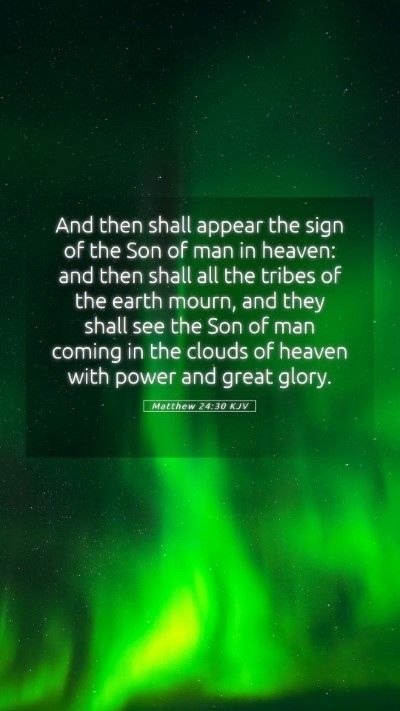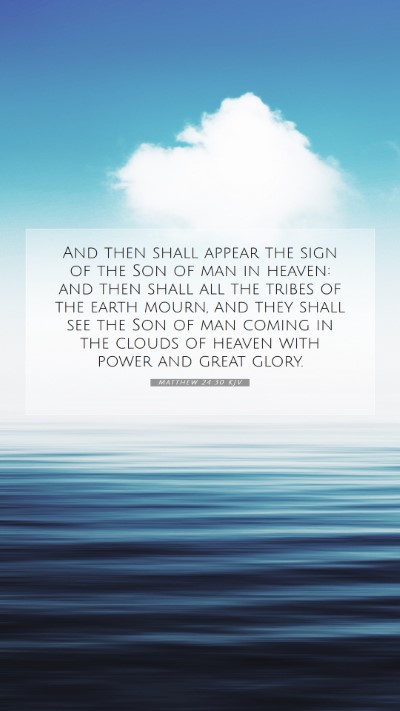Understanding Matthew 24:30
In Matthew 24:30, we encounter a profound statement by Jesus concerning His Second Coming. This verse reads:
"And then shall appear the sign of the Son of man in heaven: and then shall all the tribes of the earth mourn, and they shall see the Son of man coming in the clouds of heaven with power and great glory."
Summary of Matthew 24:30
This verse emphasizes the glorious return of Christ and the cosmic event that will accompany it. The "sign of the Son of man" represents a definitive marker or signal of His presence, heralding the end of the current age.
Insights from Public Domain Commentaries
Matthew Henry's Commentary
Matthew Henry interprets this verse as a moment of ultimate revelation, where Christ's divine authority will be apparent. The "sign" suggests a visible manifestation, serving as a reminder of His authority and fulfillment of prophecy. The mourning of "all the tribes of the earth" indicates the recognition of their rejection of Him and the consequent judgment that follows.
Albert Barnes' Notes
Albert Barnes notes that the "coming in the clouds" points to a majestic return, often associated with divine judgment. This is not merely a spiritual coming but a literal and physical return, emphasizing His power. The phrase “with power and great glory” signifies the triumph of Christ over His adversaries and the establishment of His kingdom.
Adam Clarke's Commentary
Adam Clarke expands on the prophetic nature of this verse, relating it to the Old Testament prophecies about the coming of the Messiah. He interprets the mourning of the tribes as a realization of their plight, acknowledging the One they have forsaken. Clarke underscores that this event will be both a day of great joy for believers and sorrow for those who rejected Christ.
Theological Implications
Matthew 24:30 offers a prophetic glimpse into eschatological events—the end of times when Jesus will reveal His sovereignty. It invites believers to contemplate their readiness for His return. The themes of judgment, hope, and vindication are central, implying that this return is both a comfort and a warning.
Historical Context
Understanding this verse requires an appreciation of its historical context. Given during a period of intense oppression for believers, the promise of a returning King would have brought hope amidst despair. Jesus speaks of eschatological realities that are relevant to the faith community, assuring them of His eventual triumph.
Application of Matthew 24:30
In the application of this verse to daily life, believers are encouraged to live with an eternal perspective. Understanding that Christ will return can motivate Christians to share the Gospel and bear witness to the hope found in Him. It also challenges us to evaluate our spiritual states, ensuring we are ready for His return.
Relevant Bible Cross References
- Revelation 1:7: Emphasizes the visible nature of Christ's return.
- 1 Thessalonians 4:16-17: Describes the event of the Rapture and the resurrection of the dead in Christ.
- Matthew 16:27: Indicates that Jesus will return in glory to reward every man according to his works.
Conclusion
In summary, Matthew 24:30 conveys a vital message about the Second Coming of Christ, filled with prophetic significance and immediate application for believers. It is essential for those engaged in Bible study to grasp the depth of this passage, how it connects to broader theological concepts, and its implications for personal faith and communal witness.
Additional Study Resources
- Bible study guides focused on eschatology.
- Online Bible study groups discussing the Olivet discourse.
- Tools for understanding the prophetic literature of the Bible.


